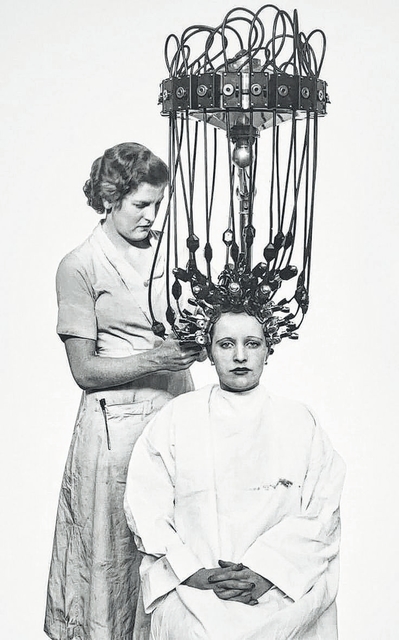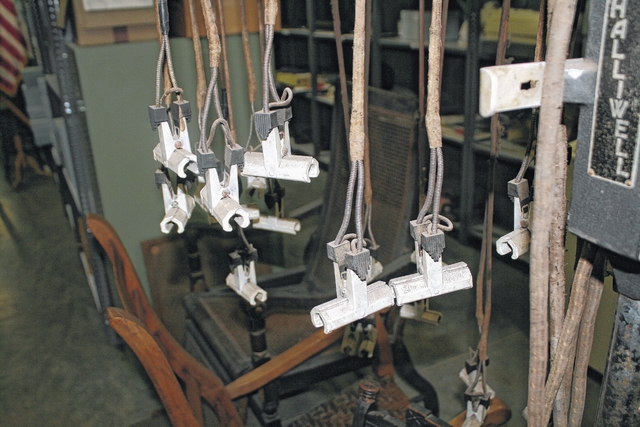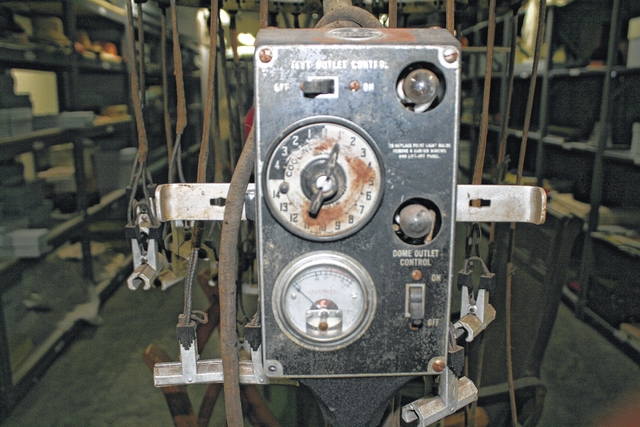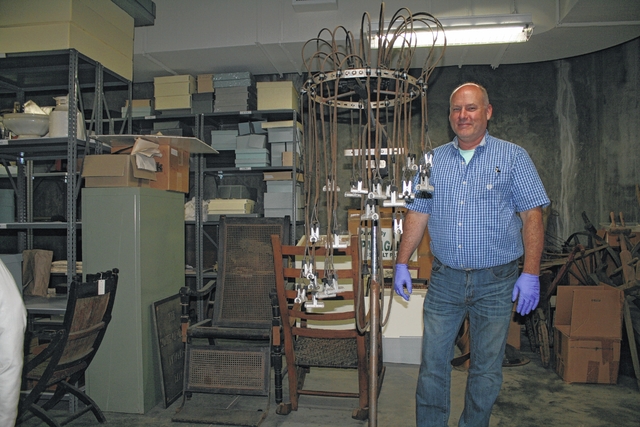



PICKENS COUNTY — Another artifact from the Pickens County Museum shows how far the world of beauty and cosmetology for women has evolved over the years.
Stored safely in the basement of the museum is a 1935 permanent wave machine, which on first inspection resembles an instrument of torture. Without some sort of explanation, it is likely to lead to looks of dismay or shock, depending on your gender.
Daniel Brennan, curator of the Pickens County Museum, said the permanent wave machine is a rare item.
“This is definitely one of a kind. I’ve never seen anything quite like this one before,” Brennan said. “There have been similar artifacts like this one that I’ve seen over the years, but nothing this big and bulky. All the other machines have been relatively small and compact.”
In 1935, the beauty shop business was still in a primitive state. The leading technology that made curls was a tall, floor-lamp shaped machine on wheels, with a series of electric cables hanging from a pole. The wires ended in clamps, one of which fastened to the strands of hair to be curled.
After being shampooed, the hair was dipped into an acrid, foul-smelling solution, wrapped in foil strips and clamped one at a time onto the machine.
A vertical metal pipe held a circular unit called a “chandelier” from which the heaters were suspended. The bottom of the pipe was mounted on a base with wheels that enabled the device to be moved easily between clients or to one side of the salon.
The chandelier took some of the weight of the heaters and kept them tidy. It also facilitated the electrical connection, and the cables to the heaters also took some of the weight of the curlers.
And then the power switch was thrown. Certainly there was that one moment of doubt, indoor electricity still in its early years, as to whether the customer would survive the experience.
Because of expense, the early models had only a few tubular heaters, and permanent-waving process took place in more than one stage, creating the process time and again depending on the amount of hair and wave desired.
As the process became more popular and competitive, a whole head of hair could be processed in one go, using up to 22 heaters in some cases.
Brennan didn’t mind sharing how impressed he was with the courage it must have taken to endure the hair treatment at the time, as well.
So the next time you are either waiting for that curling iron to heat up or for your dinner date to finally be ready, remember, it could be much worse.
